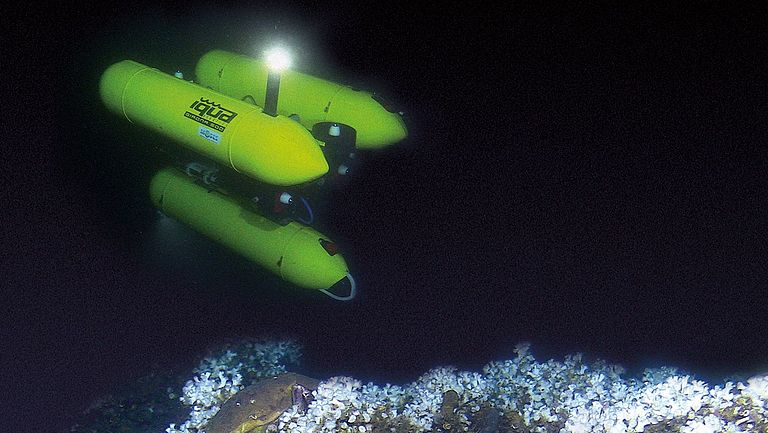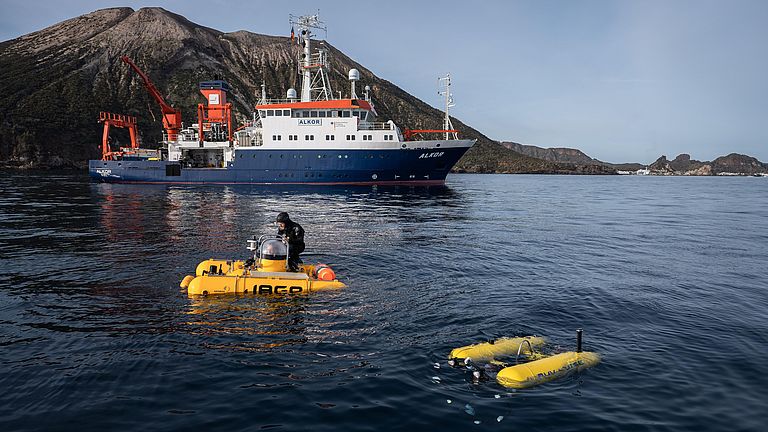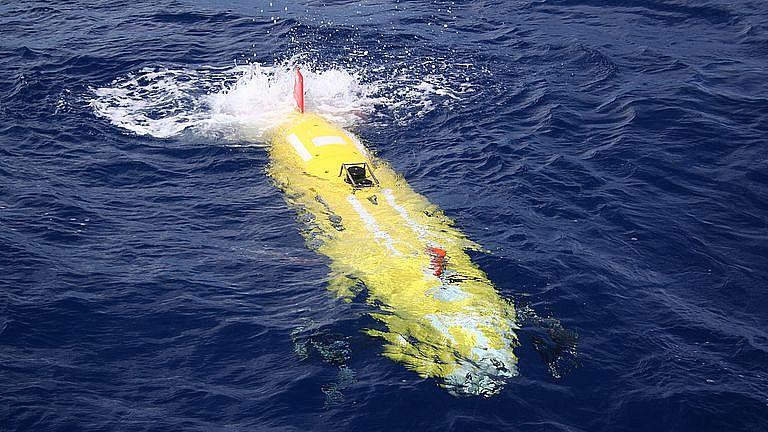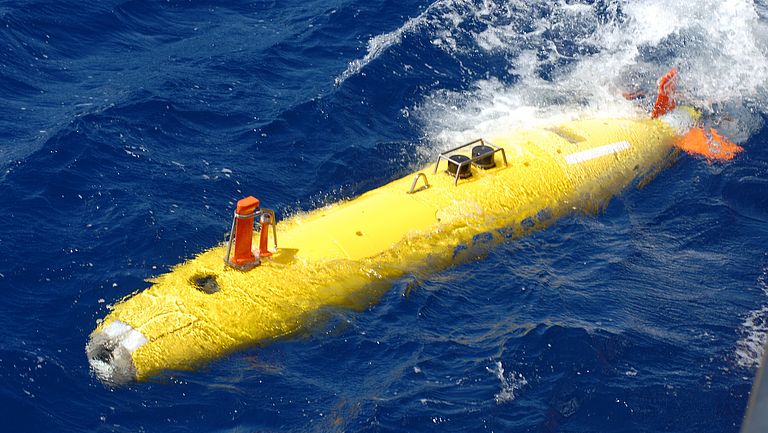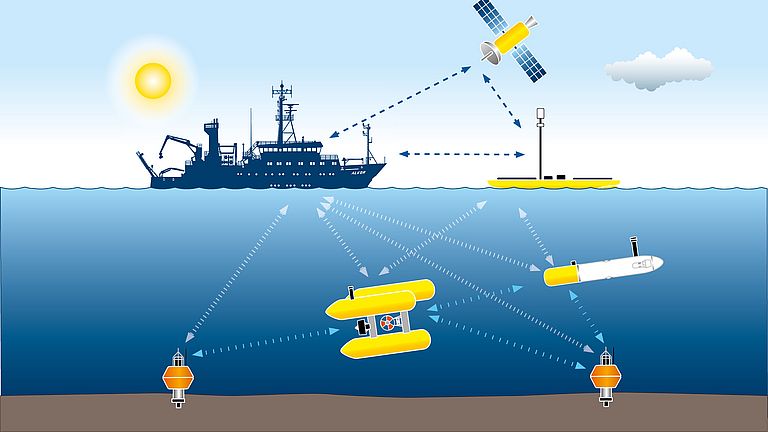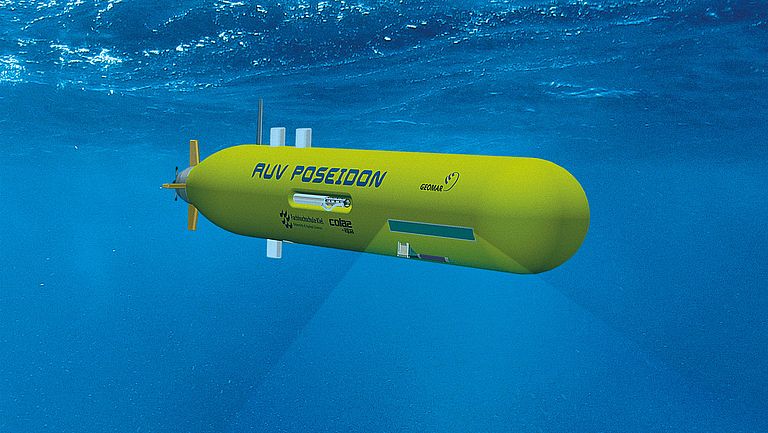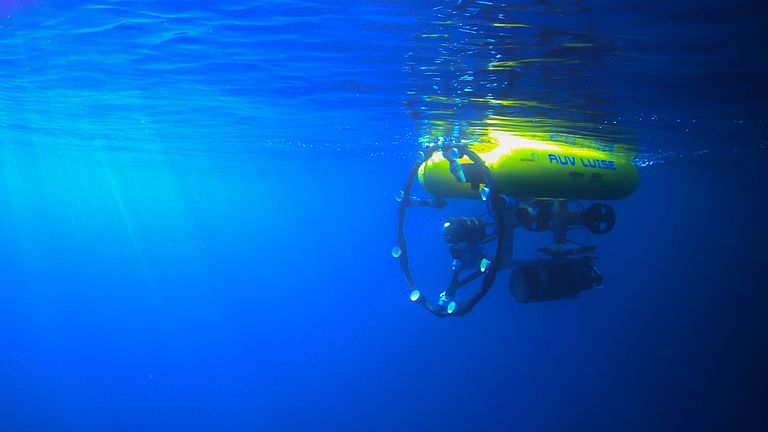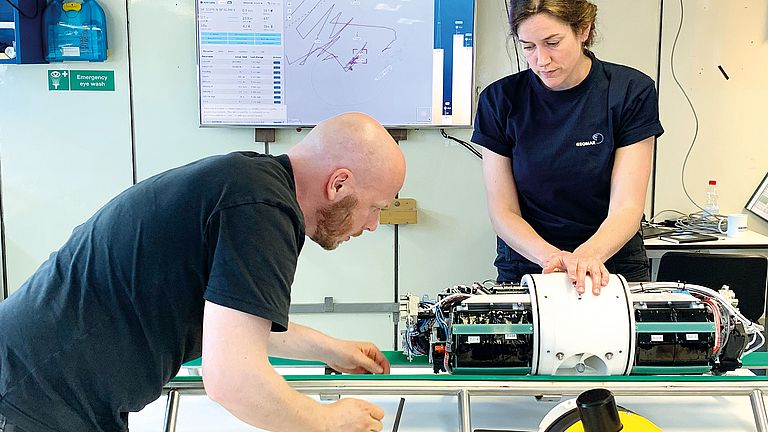Autonomous underwater vehicles (AUVs) are unmanned submersible vehicles that perform autonomous tasks underwater. Photo: JAGO Team/GEOMAR
In contrast to remotely operated underwater vehicles, such as ROVs (remotly operating vehicles), they operate completely autonomously, i.e. independently of the carrier ship and without cables. Photo: Nikolas Linke
AUVs are generally torpedo-shaped and are propelled by a propeller at the stern. This is true for most of these underwater robots, the majority of which are equipped to operate in shallow water (up to 500 m). Photo: Nico Augustin/GEOMAR
AUV - Autonomous underwater vehicles
The majority of AUVs can dive to a water depth of 100 meters. However, AUVs are also being built that can reach water depths of up to 6000 meters. Dive times range from hours and days to several months in the case of the so-called gliders. These autonomous vehicles allow access to marine regions that are difficult to reach with conventional equipment. In some regions, no research expeditions take place because the weather conditions are too dangerous for humans and material.
All AUVs are given a mission, based on which they independently travel to different waypoints, one after the other, at different water depths or different heights above ground. At the waypoints and on the way in between, different, likewise pre-programmed, measurements can be carried out. At the end of a mission, the AUV is then picked up by the mother ship at a likewise pre-programmed rendezvous point.
Depending on the design and size, a variety of different sensors can be integrated into the AUVs. At GEOMAR, the AUVs are primarily used for mapping the seafloor. Therefore, the vehicles are equipped with multibeam echosounders or side scan sonars for acoustic mapping or cameras for optical mapping.
CoraMo
In-house developed camera system
The AUV Team
Team, Images, Expeditions, Statistics, Workshop, ...


